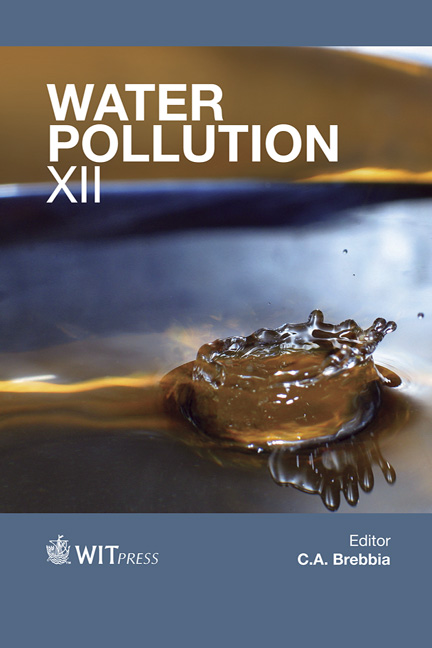Optimization And Evaluation Of A Domestic Wastewater Treatment System By Dual Combination Of Metallic Salts And Zeolites Filtration
Price
Free (open access)
Transaction
Volume
182
Pages
12
Published
2014
Size
622 kb
Paper DOI
10.2495/WP140221
Copyright
WIT Press
Author(s)
G. López-Ocaña, R. G. Bautista-Margulis, S. Méndez-Angulo, J. R. Hernández-Barajas, C. A. Torres-Balcázar, R. M. Padrón-López, E. de la Cruz-Luna & M. I. Ferrer-Sánchez
Abstract
The implementation of smaller wastewater treatment plants is currently a trending topic in many countries of Latin America. This situation is rapidly growing since the influent characteristics have become very specific according to the domestic wastewater generators. In this context, the removal efficiency of a small domestic wastewater treatment system has been evaluated and improved by applying coagulation-flocculation techniques with zeolites filtration. For the coagulation-flocculation process, calcium hydroxide [Ca(OH)2] and aluminum sulfate [Al2(SO4)3] were used to increase both the superficial rate and removal efficiency of the gravitational sedimentation. Treatability tests were carried out to evaluate the mixing time, time of flocculation process and sedimentation time. From the experimental results, the removal efficiencies (ɳ) for turbidity were found to be as follows: ɳ1= 54.03% when using only 60 ppm of Al2(SO4)3, ɳ2= 70.48% when adding only 100 ppm of Al2(SO4)3, ɳ3= 91.96% when adding 15 mg/l of Ca(OH)2 and 50 mg/l of Al2(SO4)3, ɳ4= 95.26 % when adding 10 mg/l of Ca(OH)2 and 35 mg/l of Al2(SO4)3 in combination with zeolites. Hence, it can be concluded that the removal efficiency of a given domestic wastewater plant may be improved by adjusting the hydraulic retention time and optimizing the amount of metallic salts under given operating conditions. Keywords: wastewater treatment, metallic salts, zeolites filtration, coagulationflocculation.
Keywords
wastewater treatment, metallic salts, zeolites filtration, coagulationflocculation.





